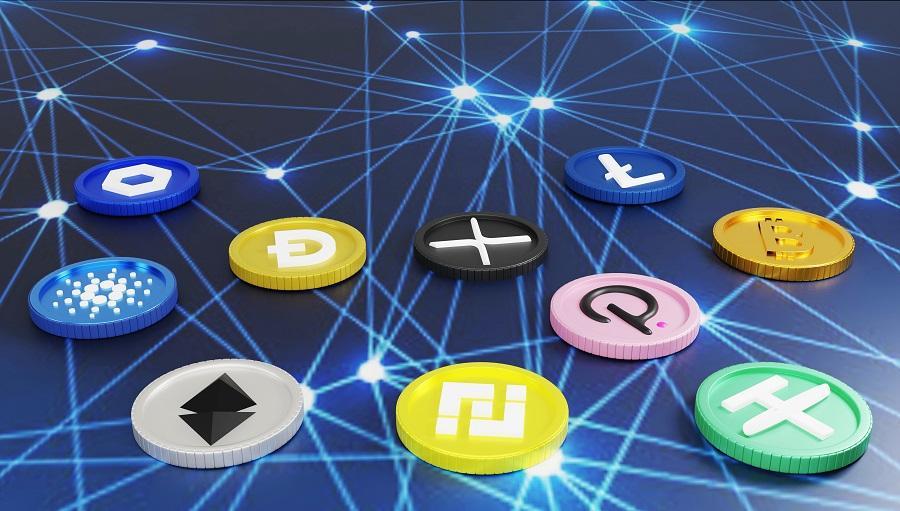
After years of crypto hype fueled by constant and extensive media coverage, we can finally conclude that most people are well-versed in crypto by now. Although the ins and outs of the technology that forms the bedrock for cryptocurrency remain a hard-to-decipher topic for many, more practical aspects like where to buy Bitcoin, how to store it and its real-life use cases no longer represent a mystery.
But the crypto industry is not one to stand still and remain trapped in the same old patterns, products and processes like other sectors might. When you think you know it all, a new development comes along and brings a breath of innovation to the market.
Over the years cryptocurrencies and the underlying blockchain technology have continued to expand their scope and permeate numerous industries, including gaming. That’s how the crypto games came to be, introducing a new parading in gaming and leading to the emergence of a promising new market. But have crypto games been able to live up to the initial fame and expectations or have they been discarded as an innovation flop?
Crypto Games Explained
For those who haven’t had the curiosity to explore crypto’s use cases beyond payment method and store of value, the idea of crypto games might seem a bit strange. However, the association between digital currencies and the gaming realm seems less farfetched when you consider both industries have a penchant for innovation, attract a large number of users and can complement each other in numerous ways.
Crypto games are simply a new genre of video games that integrate blockchain elements to enhance the gaming experience. Play-to-earn or P2E games are without a doubt the most popular form of crypto games so far. They allow players to win non-fungible tokens (NFTs) or cryptocurrency rewards by engaging and performing different actions such as completing a mission, acquiring resources, ascending to a superior level or simply spending more time playing the game.
Basically, crypto games give players the possibility to immerse themselves in a fun gaming experience while also providing them with a lucrative opportunity to earn passive income. And that’s not all that crypto games have to offer. The games built on blockchain platforms are entirely decentralized, meaning they offer payers full ownership and control of their in-game assets, be it characters, weapons, skins, experience or any other item they have acquired while playing. Gamers may choose to trade these assets, sell them or transfer them to a different blockchain-based gaming realm.

Are Crypto Games Still Popular in 2023?
Given their unique and innovative features, it’s easy to understand why crypto games might appeal to both consumers and developers. However, not every innovation is welcomed with open arms, as promising as it might be. In fact, most are met with reluctance and hesitancy, as it’s been the case with digital currencies and many other inventions in their early days. So, it’s interesting to follow the evolution of a new gaming genre like crypto games and check if they’ve made any real progress over time.
While P2E games can be traced back to 2013, the first game to use blockchain technology that could fit into the crypto game category was CryptoKitties which was launched in November 2017. Other early crypto games include HashCraft, Botwars Ultimate Trading and Axie Infinity. It didn’t take long for these games to gain public attention and pop up on gamers’ radar, and so the crypto gaming phenomenon began to take shape.
After the initial burst of popularity, many developers tried to enter the crypto gaming sphere by creating games that mainly focused on speculation and hype to attract users and didn’t pay much attention to developing a clear roadmap or providing an enjoyable gaming experience. As a result, many of the crypto games that emerged after 2020 have failed to meet players’ standards and expectations.
The P2E gaming model also appears to have lost its shine due to its lack of sustainability in the long run. The ability to earn quick returns didn’t keep players coming back for more as many chose to sell their gains instead of using them to continue playing, thus causing the coin prices to drop and cutting the fuel supply that kept the projects going. The fact that most of these games also required a minimal investment to get started also dissuaded many players from jumping on board.
Does that mean that crypto games are obsolete? Not in the least. The merger between gaming, crypto and by extension blockchain, is still a very promising one for various reasons. The introduction of a decentralized gaming structure that ensures in-game asset ownership is the main force propelling crypto games ahead. The security that comes with it gives users another reason to dip their toes into this new gaming model.
As decentralized games continue to increase in popularity in the gaming community, so does players’ interest in collectable games. The true ownership of assets gives gamers the possibility to build an extensive collection of unique and rare digital assets whose value can potentially increase in time.
In the end, the figures are the most revealing in determining the current popularity of crypto games. The blockchain gaming market was valued at $4.6 billion in 2022 and rose by 45.60% in the first quarter of 2023. This proves that people are still very much drawn to crypto games and all the innovative features this genre has to offer. Statistics also show that the industry is poised to surpass $65 billion by 2027.
It’s worth noting that crypto games are still in their infancy and haven’t had time to evolve and reach their full potential. What we’re witnessing right now is just the beginning of a new era of gaming that might change the industry as we know it.
However, since the crypto space is always full of surprises, one shouldn’t be too hasty to make assumptions about the future of crypto games. For now, it’s best to enjoy their perks and patiently wait for the next developments to come through.













